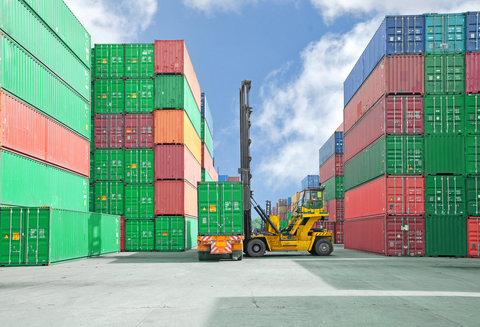
Are you curious about drayage and transloading services for your imported goods? Do you need drayage service for your imports? What is transloading and how can it help you save money on transportation? Logistics Plus drayage and port services help address these questions and any many more.
What is drayage? The word drayage is specifically used for trucking short distances. Without being a part of the transportation and logistics industry, the word drayage might be a foreign word. The term is most often used in the container shipping industry. For those of us in international shipping, the term means the trucking of containerized cargo. This may be trucking from one port to another port, it may be trucking from a port to the rail yard for further transport, it could be trucking to the final destination, or it could be trucking from a port to a transloading facility.
What is transloading? Transloading refers to the transfer of container cargo from one load unit to another. When a container is transloaded, it usually occurs at a facility that is close to a port terminal. A container will be taken into a facility and transferred to a domestic container or truckload. During the transload process, the product is often palletized at the facility since many of the 20-foot or 40-foot ocean containers are floor loaded. Inventory and transportation cost savings are achieved by switching to a truck from a container because containers must always be returned to the ports no matter how far your shipment must deliver. That means without transloading, you could be paying for the additional truck miles it takes to return your empty container to the origin port.
Speed to market is a key ingredient to an efficient supply chain. Transloading services deliver this benefit by consolidating products and shipping directly to the final customer, without incurring the costs and delays associated with storing product at a warehouse. Some product customization, such as labeling and kitting, can also occur, if needed, at the transloading facility.
Drayage, transloading and other port services all play a critical role in international moves, and selecting the right logistics partner for this domestic trucking portion of the puzzle goes well beyond the lowest rate. Once you move past monetary considerations, examine the total service offering to ensure your drayage and port services provider is the perfect fit. Here are a few good tips to consider.
- Seek out a safe, experienced partner. Ensure you are working with an experienced logistics partner that works with, and monitors, the most reliable and safe truckers.
- Ensure your partner has capacity to cover your loads. If you assign hundreds of loads, you should know your logistics partner has a network of drayage providers at all of the major ports of entry.
- Make sure you have a responsive partner. You will need a logistics partner who will answer your call, whether you are submitting a rate request, confirming receipt of a work order, or checking shipment status.
- Expect accurate billing. Invoices should be accurate, with no surprises. On-the-fly drayage changes are inevitable, but a good logistics partner will communicate them as quickly as possible.
- Require knowledge of the local market. Find an experienced partner who understands facility procedures and roadways at all of the major ports so you can get cargo moving quickly.
- Choose a partner that can provide you with cost-saving solutions. Find a domestic freight specialist that works with you to develop a complete port-to-door delivery solution that will optimize speed and reduce your overall transportation expense.
To learn more about Logistics Plus drayage and port services, or to request more information or a quote, please click the button below. You can also email us at drayage@logisticsplus.com for more information.

